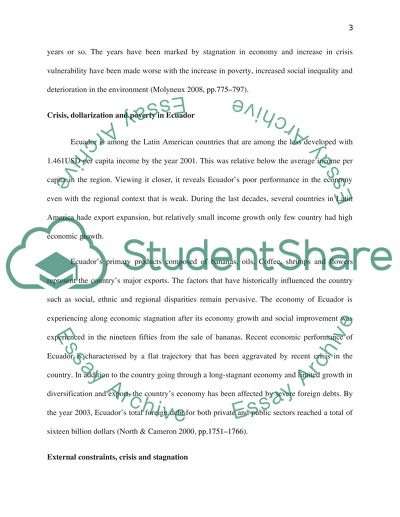Cite this document
(Neo-liberalism in Ecuador Term Paper Example | Topics and Well Written Essays - 1631 words, n.d.)
Neo-liberalism in Ecuador Term Paper Example | Topics and Well Written Essays - 1631 words. Retrieved from https://studentshare.org/politics/1671449-with-reference-to-a-particular-country-case-study-critically-outline-and-assess-the-key-features-of-neoliberal-development-policy-in-that-country
Neo-liberalism in Ecuador Term Paper Example | Topics and Well Written Essays - 1631 words. Retrieved from https://studentshare.org/politics/1671449-with-reference-to-a-particular-country-case-study-critically-outline-and-assess-the-key-features-of-neoliberal-development-policy-in-that-country
(Neo-Liberalism in Ecuador Term Paper Example | Topics and Well Written Essays - 1631 Words)
Neo-Liberalism in Ecuador Term Paper Example | Topics and Well Written Essays - 1631 Words. https://studentshare.org/politics/1671449-with-reference-to-a-particular-country-case-study-critically-outline-and-assess-the-key-features-of-neoliberal-development-policy-in-that-country.
Neo-Liberalism in Ecuador Term Paper Example | Topics and Well Written Essays - 1631 Words. https://studentshare.org/politics/1671449-with-reference-to-a-particular-country-case-study-critically-outline-and-assess-the-key-features-of-neoliberal-development-policy-in-that-country.
“Neo-Liberalism in Ecuador Term Paper Example | Topics and Well Written Essays - 1631 Words”, n.d. https://studentshare.org/politics/1671449-with-reference-to-a-particular-country-case-study-critically-outline-and-assess-the-key-features-of-neoliberal-development-policy-in-that-country.


